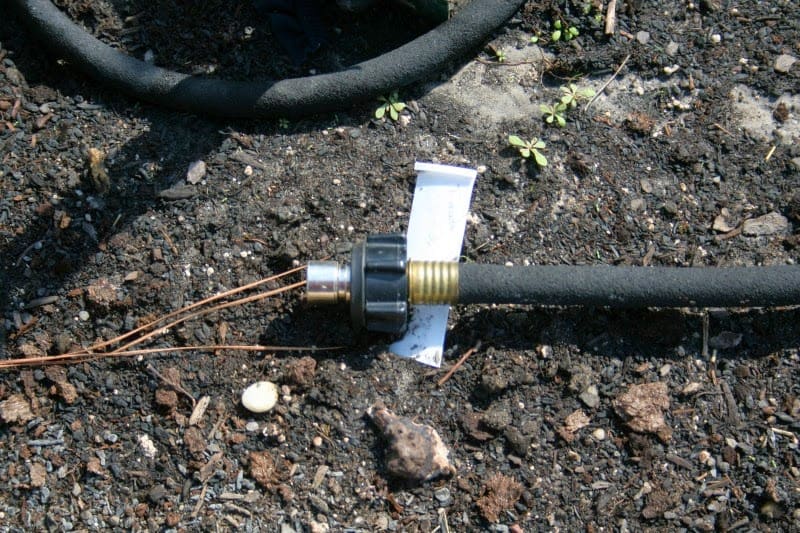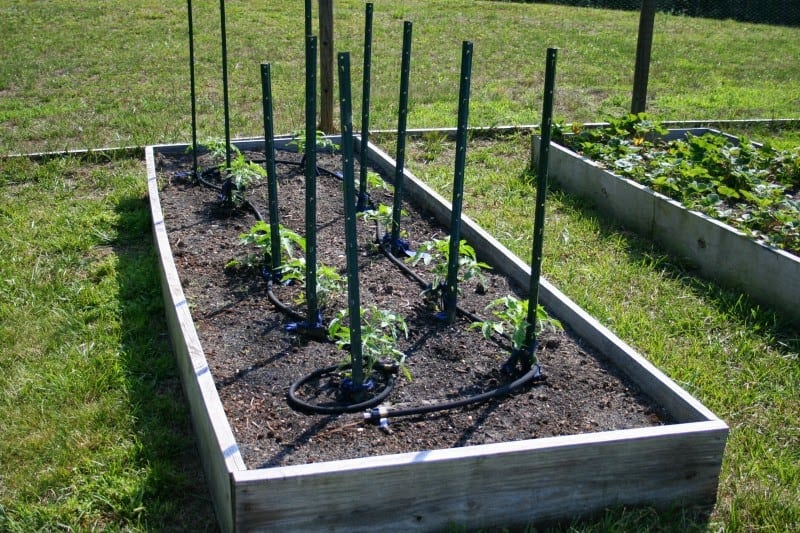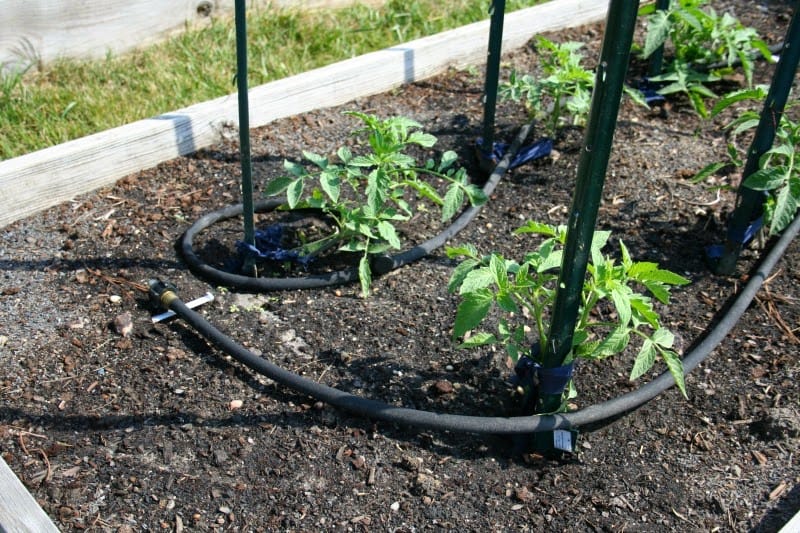How to Use a Soaker Hose
First thing first: don’t try to convert an existing hose into a soaker hose. You’ll make yourself crazy, ruin a good hose, and probably make a lousy soaker hose. Purchase a good-quality soaker hose at your local garden center. They’re not too expensive, and they last for years with proper care.
Soaker hoses come with an end cap, which keeps the water from running back out into the garden. You’ll want to purchase snap-on hose connectors. These gadgets are a life saver for me! I probably wouldn’t water my garden as frequently if I didn’t have these little gadgets on the ends of the hoses. One tip: buy metal ones. The plastic ones are a lot less expensive, but never last for more than a season. The snap-on gadgets screw onto each end of the hose. Then, instead of fussing with screwing the hose on each time you want to water the gadget, you just pull back the ring, insert the end of the hose, and push the ring back into place. Instant connection.
 |
| Snap-on coupling on the end of my soaker hose makes it easy to move the main hose to each vegetable bed. |
 |
| Tomato plants with soaker hose. |
- Conserve water! I have a well on my property, and water conservation is important. I don’t want to drain my well dry just to grow plants. The soaker hose uses less water to irrigate the garden more efficient than other systems.
- You’re watering your vegetables, not the weeds. When you run a sprinkler or the hose, you always water the soil between the plants as well as the plants themselves. So basically, you’re irrigating weed seeds along with your plants. The soaker hose concentrates water near the roots while the remaining soil stays dry. Starve those weeds!
- Less water evaporates during your irrigation time than with a sprinkler. We use to run a sprinkler that covered half of the vegetable garden, then move it to the other half. Not only did we lose a lot of water to evaporation on a hot day, but we watered the leaves (unnecessary) and the grass paths (yay! more to mow – NOT). The soaker hose keeps the water where it’s beneficial; near the roots of thirsty plants.
If you enjoyed this article, you may also enjoy:








Soaker hoses are great. I have a lot of them and have learned how to use those mending connectors when I’ve accidently stuck a shovel through one and needed it fixed. I should invest in the quick release attachments. That would be a big help!
I can’t recommend Walmart soaker hoses. Mine became brittle within the first six months. If I even bumped them with a hand tool, they split. This year I bought them from Home Depot. It’s discouraging to try to save water, but then waste natural resources by having to throw away soaker hoses that can’t be repaired!
Great tips!! I do this every year, and it make sit so much easier to care for the garden! #HomeMattersParty
Oh yay, I most definitely need to pin this and use slacker hoses in my garden this year. Thanks so much for sharing! #HomeMattersParty
I learn so much from your blog! I have started out with a tiny garden this year so I probably won’t need a soaker hose but will save for my future dream garden! #HomeMattersParty